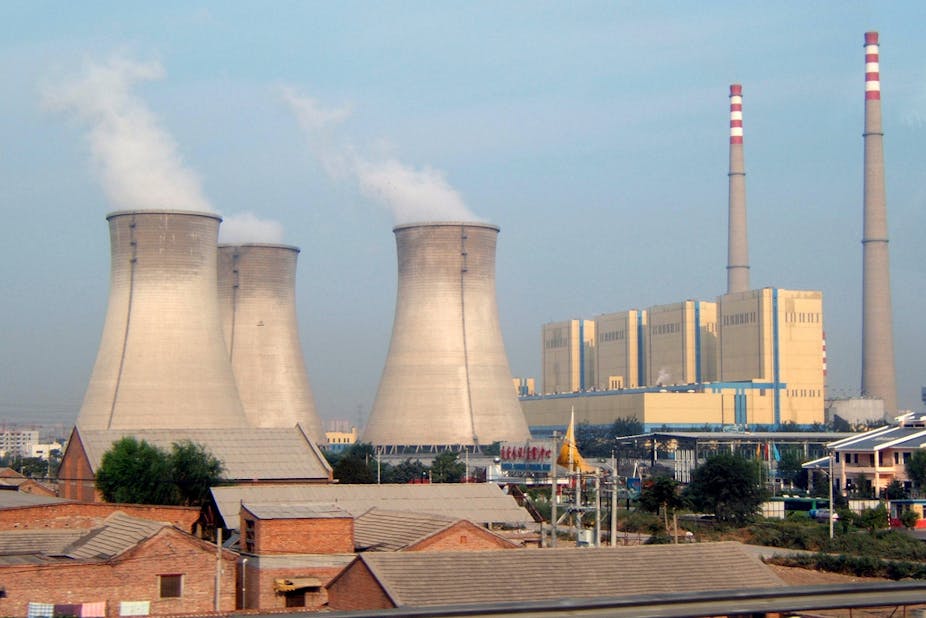Australia is on track at the end of this year to meet its emission reduction target under the Kyoto Protocol. We’ve also signed up to the new version of Kyoto. But that should not encourage us to believe that the Kyoto Protocol has succeeded in driving down global greenhouse gas emissions (GHGs). On the contrary, the Protocol has failed, and large temperature rises are now inevitable.
The Protocol was in fact doomed from its birth in 1997 because it did not encompass the world’s largest and fastest growing economies; it excluded developing countries (including the Peoples Republic of China) from binding targets, and the USA failed to sign up.
A climate target accepted by the United Nations was to limit temperature increases to two degrees C. Yet the last 10 years has seen a rapid growth in global emissions. This rise, together with the lack of a comprehensive global agreement, has meant that the target is now unachievable.
The world economy will continue to grow. Achieving the two degree target depended on attaining greater and greater efficiency, and lower and lower carbon intensity. But the continuing reliance on fossil fuels to power economies makes such a low carbon world a dream.
The chart below compares the progress being made to curb greenhouse gases with what is needed to limit temperature increase to two degrees C. There would need to be a limitation on the carbon dioxide equivalent (CO2e) concentration in the atmosphere to 450 parts per million. In the chart, “current policies” are greenhouse policies in place around the world while the “new policies” are those implemented plus those announced. The chart shows that carbon intensity needed to get to “450 ppm” (and limit temperature rise to two degrees C) is a very much lower level than is achieved by “new policies” in place.

Predictions are subject to uncertainties. Taking this into account, the International Energy Agency (IEA), citing Rogelj et al, concluded that the probability of limiting temperature rise to two degrees C is only 6% with new policies in place. The new policies will likely limit temperature increase to between three and four degrees C. This is a rise that will profoundly change the world as we know it.
The difficulty of achieving reductions in greenhouse gases is exemplified by Australia’s efforts. While Australia meets its Kyoto Protocol target, this did not involve a reduction in GHGs: it was actually allowed an increase of 8% on 1990 emissions, and achieved 105%.
Going forward, Australia’s 2020 target of reducing GHG emissions by 5% on year 2000 levels is based on an heroic assumption. Most of the abatement is through the purchase of 100 million tonnes of carbon offsets from overseas – rather than by domestic action. The availability and reliability of such overseas offsets is unknown.
Furthermore there is a sleeper in the system that, if woken, will destroy the best laid plans of mice and men.
Evidence is mounting that a recalibration of the global warming potential of methane (the main constituent of coal seam gas) is required. This potent greenhouse gas is presently reckoned to be 25 times worse than CO2. However, there is a case for increasing the multiplier to 72 or even 105 in GHG forecasts to 2020, according to the World Energy Outlook 2012 (pages 38 and 39).

Such a reassessment would blow out Australian emissions by some 200 to 300 million tonnes of CO2e (see the National Greenhouse Gas Inventory). It would also compromise GHG forecasts for the rest of the world and require an upward revision of temperature increases.
The further one looks into the future the less confidence one can have in Australia’s greenhouse policy. Achieving the policy’s 80% reduction in emissions by 2050 requires the purchase of no less than 235 million tonnes of overseas offsets. This is fully 60% of the total abatement achieved. Moreover, a great deal of the abatement is forecast to come from carbon capture and storage. But the capture of CO2 from coal and gas-fired power stations has not yet been commercially tested.
Prospects for a comprehensive and inclusive climate change agreement have steadily receded since the Copenhagen Climate Change Conference in December 2009. Certainly Kyoto mark II will not suffice. Pledges by countries to a new protocol in 2020 only add to the illusion of progress. Furthermore, a robust international carbon market that will facilitate Australia plans to generate a large proportion of its energy from fossil fuels, and get away with only a small proportion from renewables, seems a long way off.
The message is: get ready for a hotter world! And there will be no better place than in Australia to feel the heat.

